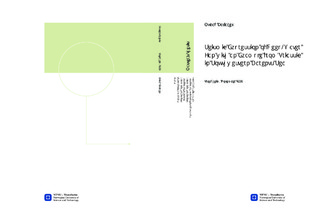| dc.description.abstract | Generation of high-quality 3D seismic data and easy access to this data across the deepwater
environments together with the prior interest of oil companies in the deep-water
exploration has attracted geoscientists to the thorough understanding of the deep-water
depositional systems over the past few years. In this thesis work, 3D seismic data with
several interpretation techniques gave the opportunity to demonstrate seismic expression
of deep-water fan with an example from the Triassic in the southwestern Barents Sea. In
order to perform a flawless analysis, it is significant to understand the internal architecture
and development phases of the fan system by seismic expression of each depositional
element in plan- and cross-sectional views.
The combination of flattening method with RMS seismic attribute is applied to
demonstrate the evidences of fluvial and deep-water depositional systems in the upper
(Snadd) and the lower (Havert) part of the Triassic formations. The advanced methods
such as model and geobody extractions are performed to confirm the internal architecture
of deep-water fan which is accurately presented in the image extracted by flattening rather
than regular interpretation methods. Integration of plan- and cross-sections provides a
better understanding of geomorphologic analysis which leads to categorize depositional
elements such as main feeder channel, crevasse splay and channels, distributary channels
and channelized lobe complex deposited within a low shelf to basin floor setting. These
elements are generated through the development of fan system from initiation and growth
phases to retreat phase. There exist similarities and differences in the architecture of
fluvial and deep-water channels; the similarities are in shape, stream width and sinuosity
ratio while the stream lengths are different for both channel systems. These comparisons
also show that the seismic expression of deep-water system is clearly visible in the data
rather than the fluvial counterparts. | |

